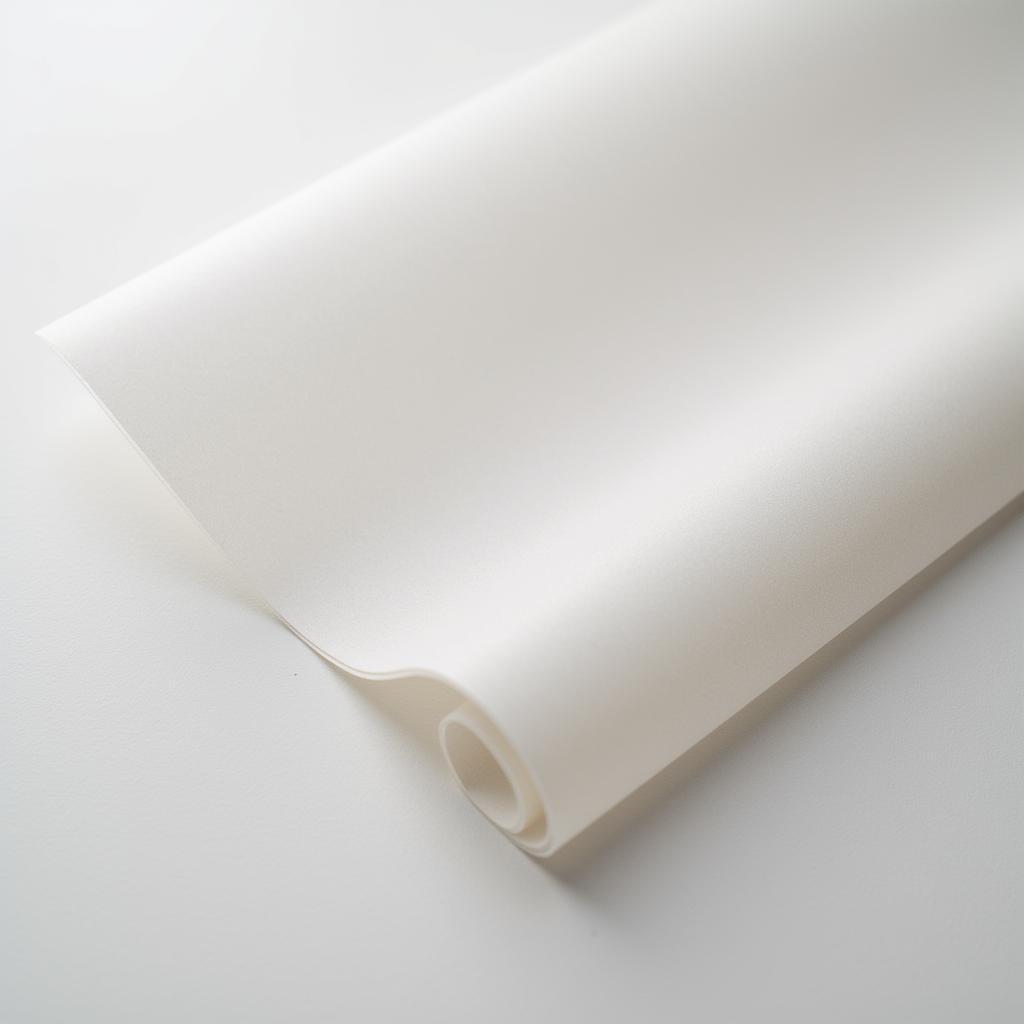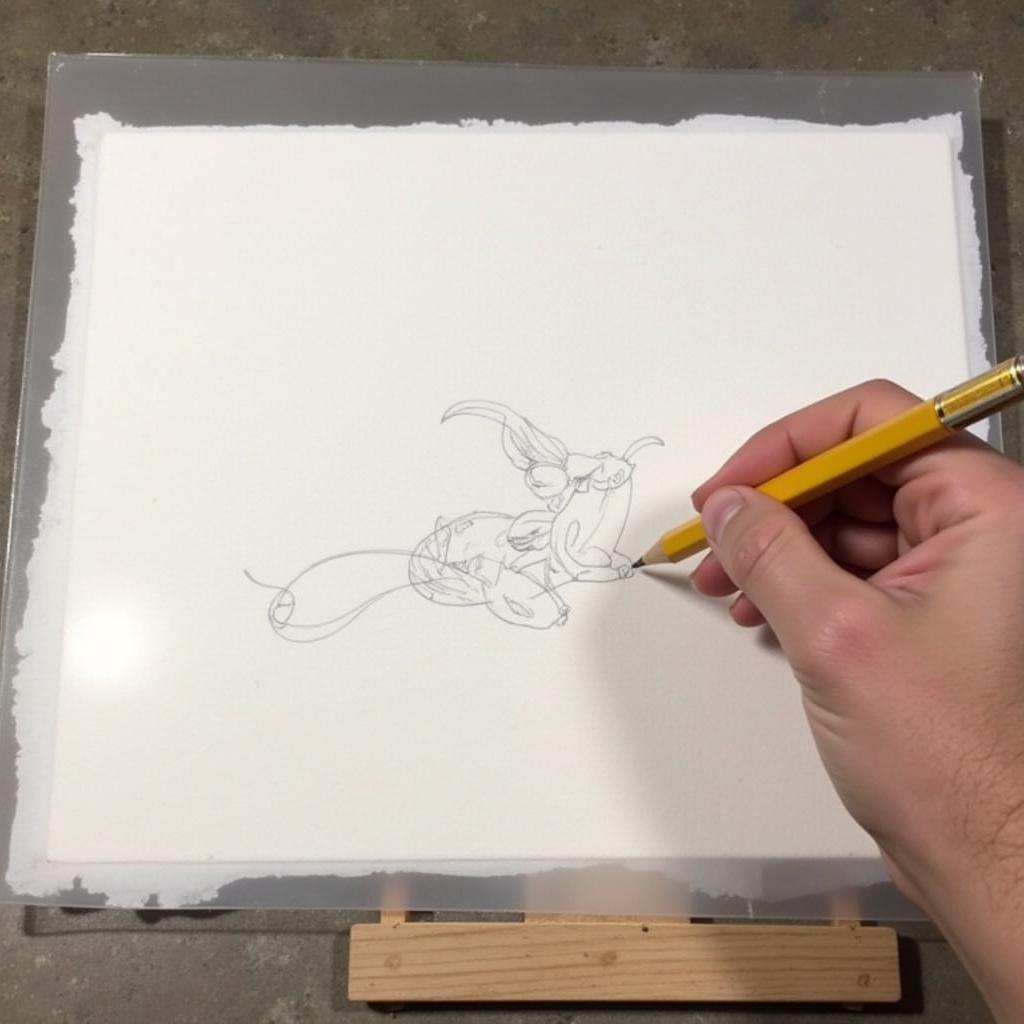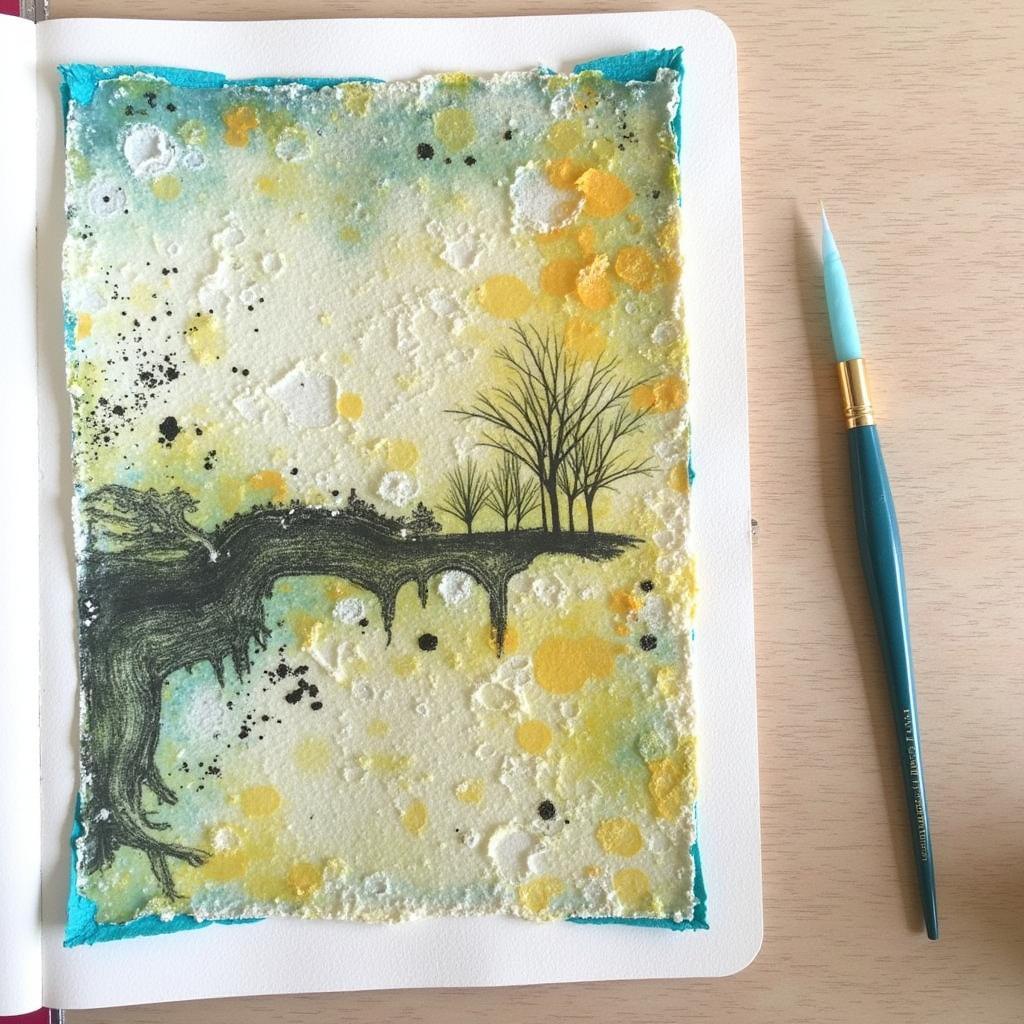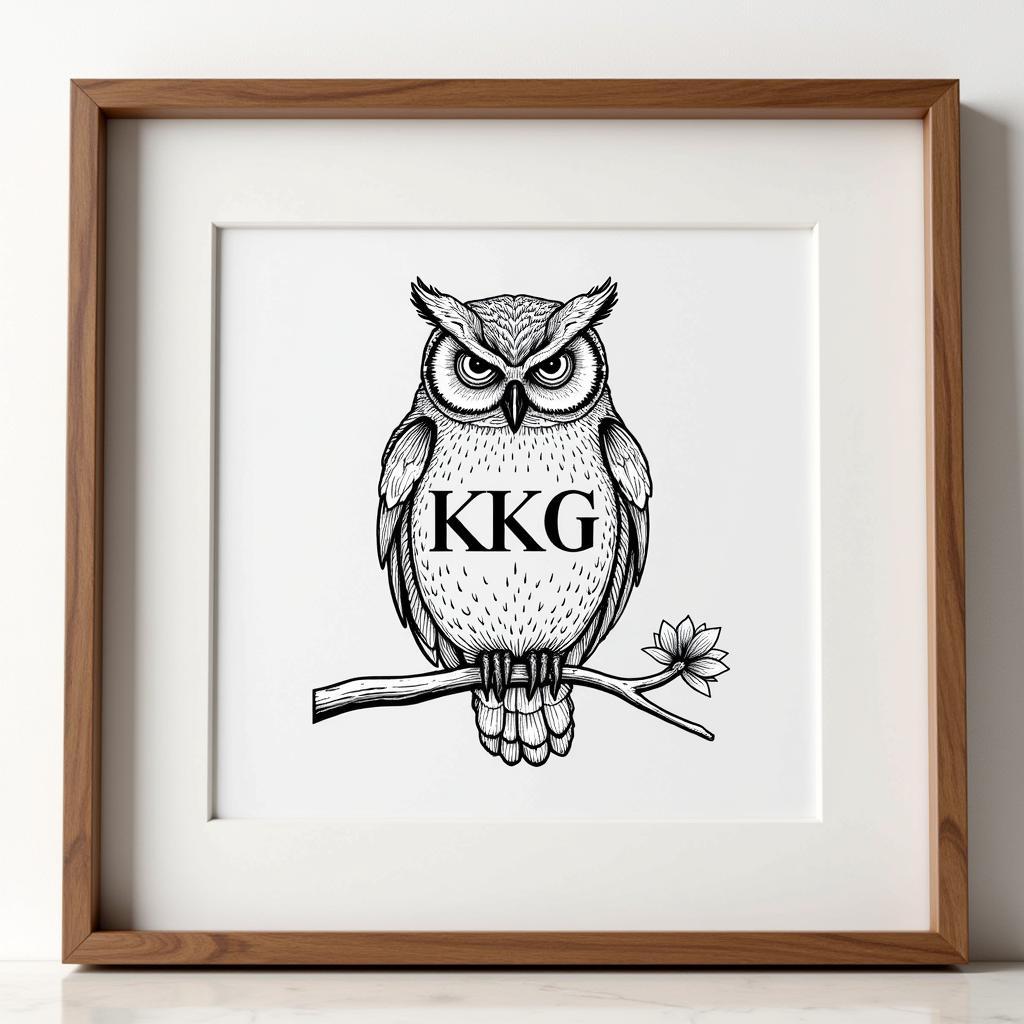Unveiling the Magic of Glassine Paper for Art
Glassine Paper For Art offers a unique blend of translucency and protection, making it a versatile tool for artists and creatives. From safeguarding delicate artwork to adding an ethereal touch to mixed media projects, this specialized paper opens up a world of possibilities. Let’s explore the enchanting world of glassine and how it can elevate your artistic endeavors. This semi-transparent paper can be used for a variety of purposes.
What is Glassine Paper and Why Use it in Art?
Glassine paper is a smooth, glossy paper treated to become air, water, and grease-resistant. This unique characteristic makes it ideal for protecting artwork from smudging, moisture damage, and even fingerprints. Beyond its protective qualities, glassine paper lends a subtle, ethereal quality to art, making it a favorite for layering, tracing, and adding delicate textures. Think of it as a whisper of magic in your artistic toolkit. After the introduction, we’ll delve deeper into the practical applications of glassine paper. For artists seeking efficient storage solutions for their paintings, check out art painting storage racks.
You might be wondering, “Is glassine paper the same as wax paper?” While they share some similarities in appearance, glassine is made through a supercalendering process that gives it a smoother, denser finish compared to wax paper. This process also makes it acid-free, ensuring the longevity and preservation of your precious artwork.
 Close-up of glassine paper texture showcasing its smooth, glossy surface.
Close-up of glassine paper texture showcasing its smooth, glossy surface.
Exploring the Versatile Applications of Glassine Paper in Art
Glassine paper’s unique properties make it incredibly versatile. Artists utilize it for a range of applications:
- Protecting artwork: Its resistance to moisture and grease makes it a perfect barrier against smudging and damage during storage or transport.
- Tracing and transferring images: The translucency of glassine allows for easy tracing, making it invaluable for transferring sketches and designs.
- Creating layered effects: Glassine adds depth and dimension to mixed media projects, offering a subtle, translucent layer that plays with light and color.
- Making stencils: The smooth, non-stick surface is ideal for cutting stencils for various art mediums.
- Packaging artwork: Glassine envelopes and sleeves offer a sophisticated and protective way to present and store artwork. Looking for protective sleeves for your art? Explore some options for art protector sleeves.
 Artist using glassine paper to trace a sketch onto canvas.
Artist using glassine paper to trace a sketch onto canvas.
Tips and Tricks for Working with Glassine Paper
While working with glassine can be a joy, here are a few tips to enhance your experience:
- Use a light touch: Due to its delicate nature, avoid using heavy pressure when drawing or tracing on glassine.
- Experiment with different mediums: Glassine works well with pencils, pens, markers, and even light washes of watercolor.
- Consider the size and weight: Glassine is available in various weights and sizes, choose the one that best suits your project.
- Store flat: To prevent wrinkles and creases, store glassine paper flat in a dry environment.
Protecting your art prints is crucial, and using cellophane bags for art prints can be a great option.
How to Choose the Right Glassine Paper for Your Art
Not all glassine paper is created equal. Factors like weight, finish, and acid-free properties are important considerations. For archival purposes, always opt for acid-free glassine to ensure the longevity of your artwork. Lighter weight glassine is suitable for tracing and layering, while heavier weights offer more robust protection.
Conclusion: Embrace the Subtle Elegance of Glassine in Your Art
Glassine paper for art is more than just a protective layer; it’s a versatile tool that enhances creativity and adds a touch of magic to your artistic process. From preserving delicate masterpieces to adding depth and dimension to mixed media projects, glassine paper’s unique properties open a world of possibilities for artists of all levels. Explore its potential and discover the subtle elegance it brings to your artwork.
 Finished mixed media artwork with a visible glassine paper layer adding depth.
Finished mixed media artwork with a visible glassine paper layer adding depth.
FAQ
- Is glassine paper waterproof? While highly water-resistant, glassine is not entirely waterproof. Prolonged exposure to water can eventually cause it to break down.
- Can I print on glassine paper? Yes, you can print on glassine, but it requires specific printer settings and ink types. Test on a small piece first.
- Where can I buy glassine paper? Art supply stores, online retailers, and some packaging suppliers carry glassine paper.
- Is glassine paper recyclable? Yes, glassine paper is biodegradable and recyclable.
- What is the difference between glassine and parchment paper? Parchment paper is heat-resistant and used for baking, while glassine is primarily used for protection and artistic purposes.
- Can I use glassine paper for calligraphy? While possible, the smooth surface of glassine can make ink control challenging for calligraphy.
- How do I store glassine paper long-term? Store it flat in a cool, dry place away from direct sunlight.
Need help with art storage solutions? Contact us at Phone Number: 02462573573, Email: danteum@gmail.com Or visit us at: Savico Megamall, 7-9 Đ. Nguyễn Văn Linh, Gia Thụy, Long Biên, Hà Nội 10000, Việt Nam. We have a 24/7 customer service team.


